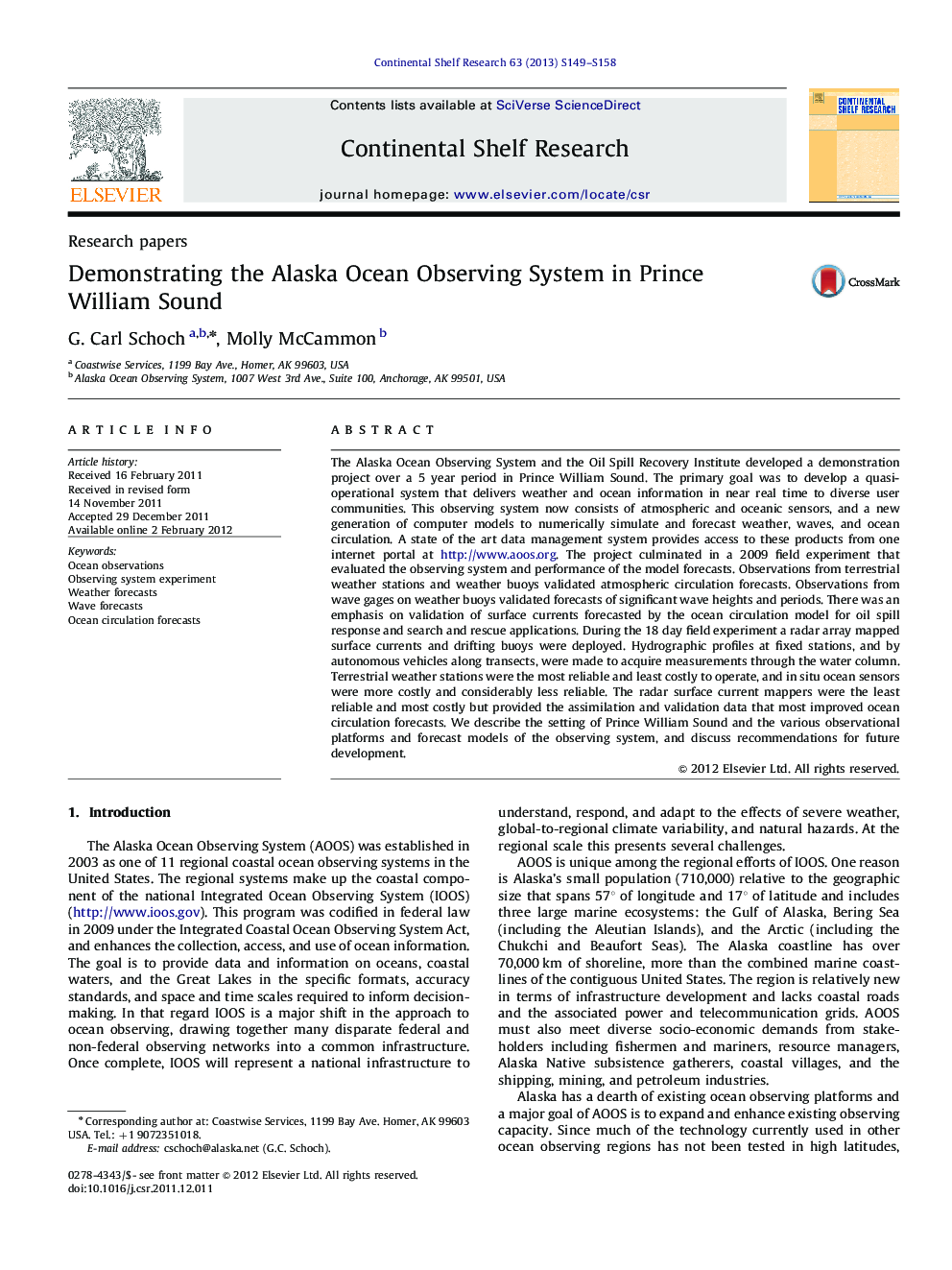| کد مقاله | کد نشریه | سال انتشار | مقاله انگلیسی | نسخه تمام متن |
|---|---|---|---|---|
| 4532088 | 1325093 | 2013 | 10 صفحه PDF | دانلود رایگان |

The Alaska Ocean Observing System and the Oil Spill Recovery Institute developed a demonstration project over a 5 year period in Prince William Sound. The primary goal was to develop a quasi-operational system that delivers weather and ocean information in near real time to diverse user communities. This observing system now consists of atmospheric and oceanic sensors, and a new generation of computer models to numerically simulate and forecast weather, waves, and ocean circulation. A state of the art data management system provides access to these products from one internet portal at http://www.aoos.org. The project culminated in a 2009 field experiment that evaluated the observing system and performance of the model forecasts. Observations from terrestrial weather stations and weather buoys validated atmospheric circulation forecasts. Observations from wave gages on weather buoys validated forecasts of significant wave heights and periods. There was an emphasis on validation of surface currents forecasted by the ocean circulation model for oil spill response and search and rescue applications. During the 18 day field experiment a radar array mapped surface currents and drifting buoys were deployed. Hydrographic profiles at fixed stations, and by autonomous vehicles along transects, were made to acquire measurements through the water column. Terrestrial weather stations were the most reliable and least costly to operate, and in situ ocean sensors were more costly and considerably less reliable. The radar surface current mappers were the least reliable and most costly but provided the assimilation and validation data that most improved ocean circulation forecasts. We describe the setting of Prince William Sound and the various observational platforms and forecast models of the observing system, and discuss recommendations for future development.
► A high latitude ocean observing system was developed as a demonstration project in Prince William Sound, Alaska.
► Observational components were evaluated over a 5 year period; nowcast/forecast models were evaluated over a 3 week field experiment in 2009.
► Terrestrial weather stations were the most reliable and least costly to operate.
► In situ ocean sensors and radar surface current mappers were the least reliable and most costly.
► Ocean circulation forecast skill was most improved by data assimilation of radar surface currents.
Journal: Continental Shelf Research - Volume 63, Supplement, 15 July 2013, Pages S149–S158